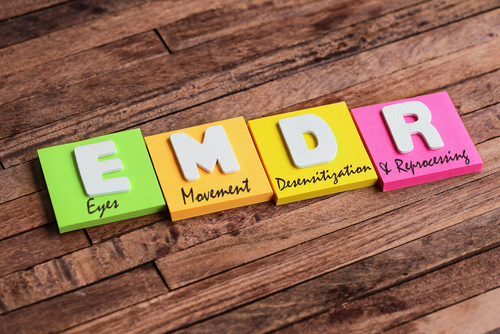Eye Movement Desensitization and Reprocessing Therapy (EMDR) is a type of therapy that was developed to help treat individuals who suffered from traumatic events. American psychologist, Francine Shapiro developed Eye Movement Desensitization and Reprocessing (EMDR) therapy in 1987. According to the EMDR Research Foundation, “EMDR is an integrative psychotherapy approach that has been extensively researched and proven effective for the treatment of trauma. EMDR therapy includes a set of standardized protocols that incorporate elements from many different treatment approaches. To date, EMDR has helped millions of people of all ages relieve many types of psychological stress.” EMDR is an eight-stage therapeutic process that can be used independently, or as a means to supplement other psychotherapeutic treatment methods. EMDR incorporates a variety of principals from other therapeutic modalities, including behavioral therapy and cognitive behavioral therapy (CBT). EMDR is based on the notion that physiological symptoms occur as a result of trauma or challenging experiences overwhelming the brain’s natural ability to heal.
Who Can It Help?
Although EMDR was originally developed to treat people recover from isolated or repeated exposures to trauma, it has since proven an effective method of treatment for a variety other mental health conditions, including anxiety, depression, substance use disorder, panic disorders, post-traumatic stress disorder (PTSD), and more. Instead of spending time revisiting the memory of past trauma, a core component of other psychotherapeutic modalities, EMDR emphasizes shifting the emotions, behaviors, and/ or thoughts surrounding the trauma to enable the brain to heal itself. EMDR therapy often requires fewer sessions than other psychotherapies.
How Does It Work?
EMDR works to relieve one’s brain of certain coping mechanisms that have been developed to help an individual cope with a traumatic event or events. When an individual experiences a traumatic event, it is not uncommon for the memory of this event to get stuck in the right hemisphere of one’s brain. The left side of one’s brain will then self soothe and implement other coping mechanisms to help deal with this memory. The simple explanation for how EMDR works is that it does not allow one’s brain to perseverate on the negative experience. Instead it enables one’s brain to process the negative experience (and implement a positive self-belief) through both hemispheres of one’s brain, by utilizing the bilateral eye movement method. EMDR is comprised of the following eight stages:
- Initial history discovery and treatment planning
- Preparation
- Assessment
- Desensitization
- Installation
- Body scan
- Closure
- Reevaluation
While in the presence of a mental health professional and in a safe and controlled environment, EMDR therapy facilitates the healing process through bilateral stimulation where the individual can revisit the experienced trauma and learn to re-process and reintegrate it in a way that is both healthy and disarming, alleviating physiological stress. A typical EMDR session lasts between sixty to ninety minutes long.
Disclaimer:
The information above is provided for the use of informational purposes only. The above content is not to be substituted for professional advice, diagnosis, or treatment, as in no way is it intended as an attempt to practice medicine, give specific medical advice, including, without limitation, advice concerning the topic of mental health. As such, please do not use any material provided above as a means to disregard professional advice or delay seeking treatment.

